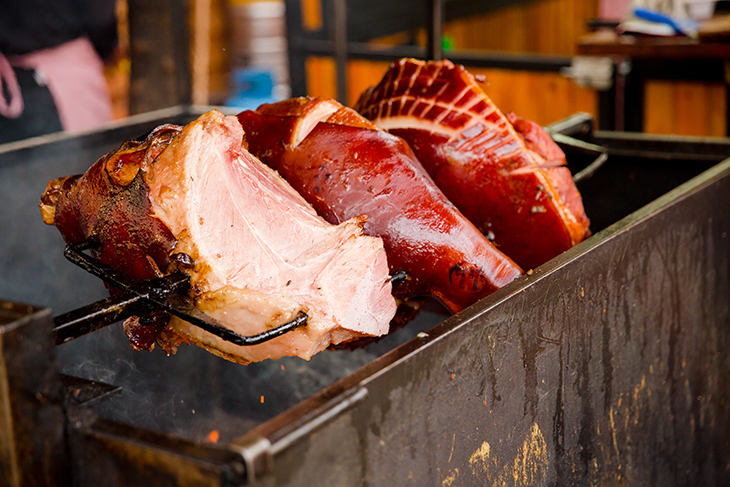Roasting the poor pig is many centuries old, and thus the ways of cooking it are just as many if counted in decades.
The word "pork" has its origins in the Old French language. In Middle English, the term "porc" referred to the meat of a pig, while "pig" or "swine" denoted the live animal.
The transition from "porc" to "pork" likely occurred during the Norman Conquest of England in the 11th century.
During this period, the Normans, who spoke Old French, had a significant influence on the English language. The upper classes in England, including the ruling Normans, primarily used French, while the lower classes spoke Old English. This linguistic division led to a situation where the names for animals in the field (such as "pig" or "swine") retained their Old English roots, while the names for the meats derived from those animals were influenced by French.
So, "pork" is a linguistic reflection of the Norman influence on the English language, with the term being derived from the Old French word "porc." This pattern is also observed with other meats in English, such as "beef" (from Old French "boef") and "veal" (from Old French "veal"), showcasing the culinary and cultural interactions between the Norman conquerors and the English-speaking population.
Pork's versatility in the kitchen has led to the creation of a vast array of delicious dishes across the globe. From Chinese char siu to German bratwurst, each culture has infused its unique flavors and cooking techniques into pork-based cuisine. Whether roasted, grilled, braised, or cured, pork continues to be a staple in kitchens worldwide.

Therefore, let us set the tone with this Ode to the Pig:
For all is good in thee:
Thy flesh, thy lard, thy muscles and thy tripe!
As galantine thou’rt loved, as blood pudding adored.
A Saint has, of thy feet, created the best type
Of trotters. And from the Perigord,
The soil has blessed thee with so sweet a scent
It could have woo’d Xantippe, all her anger spent
To join with Socrates, who elsewise she abhorred
In worship of this Lord
Of animals dear hog: angels meat, say we.
But now to the task of pork with crackling:
Deliciously tender roast pork topped with perfect crispy crunchy crackling is much easier than you think… This recipe takes about 2 hours from start to finish and only 5 minutes is hands on time!
Many a good cook will tell you the secrets are few and simple, as follows:
The secret to pork crackling lies in getting a few things right:
Score the rind almost to he flesh in a diamond pattern, or straight as wide as your finger, or if you wish (or get your butcher to do it). You can do it using a razor blade in the absence of a very sharp knife. Take the blade out of your paint scraper—ok?.
Pat the rind dry with kitchen roll. Rub plenty of coarse salt into the scored rind and then best to leave overnight in the fridge uncovered. At cooking time brush off the salt and again pat dry with paper towel.
Cook on a really high temperature (240C / 220C fan / gas mark 9 / 475F) for the first 30 minutes of cooking, then turn the oven down (to 200C / 180C for remainder of the cooking time. This sudden blast of heat is the key to crispy crackling. Cooking time is about 30-35 minutes per kg. However, to be sure, use a meat thermometer. Do not cover during cooking and leave for about 10 mins before hacking into it.
Serve with you favourites, like sautéed sliced apple in butter with a little brown sugar.

Please send all leftovers to the poor people in Tasmania. Or to India where they make “curried Mongoose on a stick."

















































